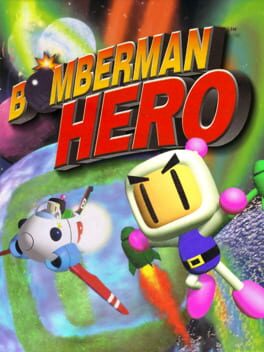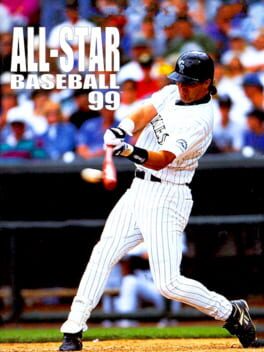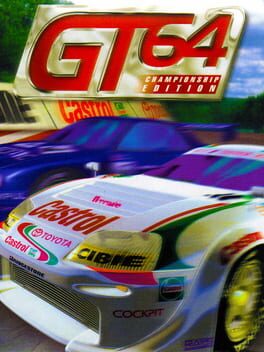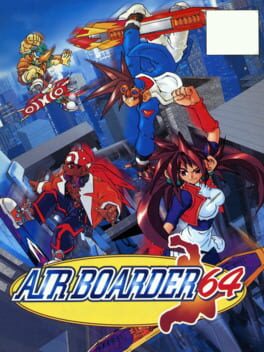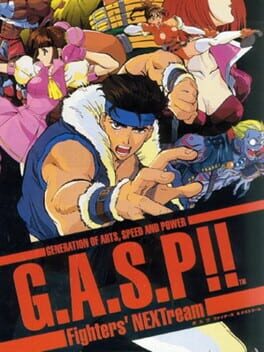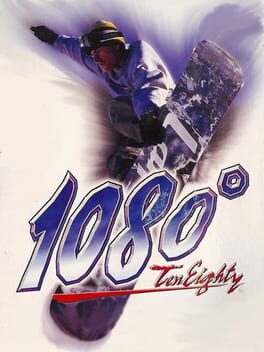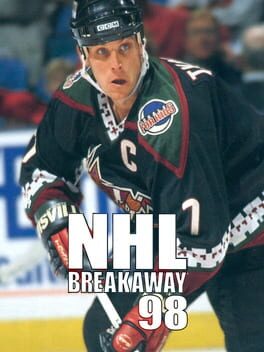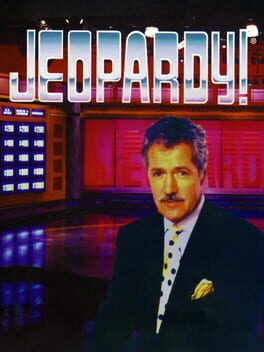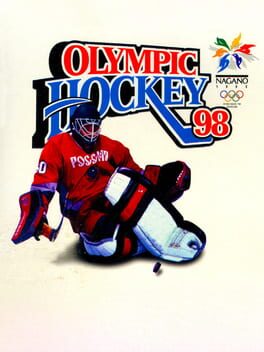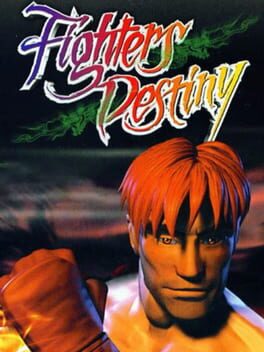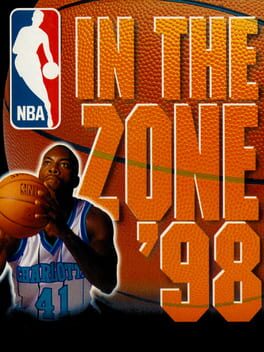Cube1701
1998
Coming out a mere six months after the first Bomberman game on N64, this Bomberman game seems like it was developed as a separate take on Bomberman rather than a sequel to Bomberman 64 (it actually started out as a Bonk game). This focuses solely on platforming rather than the more puzzle-orientated Bomberman 64, but unfortunately doesn’t so much with it.
Bomberman Hero is made up of a lot of short, linear levels, ether played from side to side or up into the screen. You collect gems, kill enemies and try to get to the door. The main challenge is from the poor depth perception and rather naff jump, with the difficulty of the first level and final level being pretty much the same. Very few levels stand out, and the ones that do (one that adds a lot of fog and one on moving platforms) do so because they’re particularly bad.
There are a few types of vehicle levels, which all feel like slow and boring copies of Star Fox 64. Move into the screen, firing off torpedoes while avoiding enemies.
Bosses are a particular nuisance, not so much that their attacks are difficult to dodge, but rather because they have a lot of health and take ages to defeat – the last world before the ending being comprised of repeated boss sections before the final boss.
Like Bomberman 64, there is a hidden final bit of story, but the game is far to dull to hunt for all the collectibles required to do so – and it’s just more of the same, really dull gameplay. It’s nowhere near as tedious as Bobmerman 64, it’s just a really boring and average platformer.
Incidentally, despite Bomberman being legendary for multiplayer, Bobmerman Hero has no multiplayer whatsoever.
Bomberman Hero is made up of a lot of short, linear levels, ether played from side to side or up into the screen. You collect gems, kill enemies and try to get to the door. The main challenge is from the poor depth perception and rather naff jump, with the difficulty of the first level and final level being pretty much the same. Very few levels stand out, and the ones that do (one that adds a lot of fog and one on moving platforms) do so because they’re particularly bad.
There are a few types of vehicle levels, which all feel like slow and boring copies of Star Fox 64. Move into the screen, firing off torpedoes while avoiding enemies.
Bosses are a particular nuisance, not so much that their attacks are difficult to dodge, but rather because they have a lot of health and take ages to defeat – the last world before the ending being comprised of repeated boss sections before the final boss.
Like Bomberman 64, there is a hidden final bit of story, but the game is far to dull to hunt for all the collectibles required to do so – and it’s just more of the same, really dull gameplay. It’s nowhere near as tedious as Bobmerman 64, it’s just a really boring and average platformer.
Incidentally, despite Bomberman being legendary for multiplayer, Bobmerman Hero has no multiplayer whatsoever.
Licensed sports games aren’t what you expect to be published by Nintendo, but here we are with NBA Courtside, a licensed basketball game and one that does a really good job with the sport. The graphics are particularly good on the N64, with some really nice reflections on the court.
At first, it seemed like a very back and forth game like other baseball games, with you and your opponent taking turns to score, but I eventually learnt how to properly tackle and defend (players you aren’t directly controlling move to sensible positions) and was able to go on the offensive and win some matches. Controls are fluid with a lot of options to adjust to your liking.
NBA Courtside is a very solid basketball game, one that is enjoyable for non-Basketball fans and probably great for those who are into the sport.
At first, it seemed like a very back and forth game like other baseball games, with you and your opponent taking turns to score, but I eventually learnt how to properly tackle and defend (players you aren’t directly controlling move to sensible positions) and was able to go on the offensive and win some matches. Controls are fluid with a lot of options to adjust to your liking.
NBA Courtside is a very solid basketball game, one that is enjoyable for non-Basketball fans and probably great for those who are into the sport.
The N64’s first baseball game that was actually released in America (and Europe). This follows similar control schemes to most of the Japanese baseball games, aiming the bat with the stick. One notable thing is that this is entirely in 3D, and doesn’t switch to a different style when the fielders are chasing the ball.
Like Power Pros 5, it also has an indicator to show where the ball is heading towards, but this is initially confusing as it moves as the ball curves, and I did manage to hit the ball a few times and even get a home run. The computer still feels like they’re far too skilled, especially when catching balls, though.
There’s a nifty cheat that allows for playing in an alien stadium (which deforms players to look alien-like) but there aren’t a lot of modes. This seems like a decent baseball game, but that’s coming from someone who has yet to win a baseball match in a video game.
Like Power Pros 5, it also has an indicator to show where the ball is heading towards, but this is initially confusing as it moves as the ball curves, and I did manage to hit the ball a few times and even get a home run. The computer still feels like they’re far too skilled, especially when catching balls, though.
There’s a nifty cheat that allows for playing in an alien stadium (which deforms players to look alien-like) but there aren’t a lot of modes. This seems like a decent baseball game, but that’s coming from someone who has yet to win a baseball match in a video game.
Racing games that go for “realism” really don’t age as well as sillier and more arcade-style racing games, and GT 64 when it came out was already just a cheap cash-in to make itself look like Gran Turismo on the N64. Due to this, GT 64 is a truly horrid experience without a single redeeming feature.
Before each race, you need to qualify for starting position. The default is a 3 lap time trial which sounded horrible, so I selected “special stage”. This is a 1 lap time trial, but with a warm up lap before it. The racing itself is very stiff and janky, and the CPU racers feel more like obstacles than rivals. There’s also no music, with the only sound a really horrible engine noise – I ended up muting the game.
You race across three tracks, and then race across slightly different versions of those three tracks – with the difference between “shot and long” feeling less unique than the different routes in their previous game, Multi-Racing Championship. Then you can play the three tracks two more times in mirror mode.
Cruis’n USA had some mild bouts of enjoyment, this is just pure tedium all the time and the worst racer on the N64 so far.
Before each race, you need to qualify for starting position. The default is a 3 lap time trial which sounded horrible, so I selected “special stage”. This is a 1 lap time trial, but with a warm up lap before it. The racing itself is very stiff and janky, and the CPU racers feel more like obstacles than rivals. There’s also no music, with the only sound a really horrible engine noise – I ended up muting the game.
You race across three tracks, and then race across slightly different versions of those three tracks – with the difference between “shot and long” feeling less unique than the different routes in their previous game, Multi-Racing Championship. Then you can play the three tracks two more times in mirror mode.
Cruis’n USA had some mild bouts of enjoyment, this is just pure tedium all the time and the worst racer on the N64 so far.
1997
Some arcade games are great for playing for hours, making home console ports good ways to play. Others are fun for 10 minute bursts and you see how soulless they are if you sit down for much longer. Rampage is one of the latter games.
You take control of one of three monsters (not-King Kong, not-Godzilla and a wolf monster) and smash buildings and eat people. Being a monster is fun to start with, but the fun only lasts for a few minutes as you smash up the same few types of buildings again and again. There’s zero variety – once you’ve played the first level, you’ve pretty much experienced the whole game.
It all feels a bit clunky, too, smashing buildings feels a bit awkward as you have to jump onto them to start the process, movement just isn’t fluid and there aren’t many ways to take out a building. Everything already felt dated when it came out on the N64, and time hasn’t helped it out.
That said, Rampage World Tour is an accurate port of the arcade game, which itself is an accurate update of the original. If you really, really wanted to play Rampage at home, this provided that experience – it just didn’t do anything else.
You take control of one of three monsters (not-King Kong, not-Godzilla and a wolf monster) and smash buildings and eat people. Being a monster is fun to start with, but the fun only lasts for a few minutes as you smash up the same few types of buildings again and again. There’s zero variety – once you’ve played the first level, you’ve pretty much experienced the whole game.
It all feels a bit clunky, too, smashing buildings feels a bit awkward as you have to jump onto them to start the process, movement just isn’t fluid and there aren’t many ways to take out a building. Everything already felt dated when it came out on the N64, and time hasn’t helped it out.
That said, Rampage World Tour is an accurate port of the arcade game, which itself is an accurate update of the original. If you really, really wanted to play Rampage at home, this provided that experience – it just didn’t do anything else.
1998
Air Boarder 64 is a trick-based skateboarding-style games, but on hoverboards. The fascinating thing about Air Border is that this came out before Tony Hawk’s Pro Skater. The unfortunate thing is that the developers of Air Border never seemed to figure out what the player is supposed to do in a game like this, instead opting for a bunch of random modes.
You have a trick mode (spoiled somewhat because you have to hit gates in a certain time), a time trial, coin collection and free play. It all feels like the developers were testing different things, but none of them really feel like a completed feature, seeming a bit disjointed. The five levels also feel like they’re each from a completely different game, with zero cohesion in theme or level design.
You have the starting skate park, a forest level, a bit of a city during winter, a few islands connected by a massive bridge and one where you’re tiny in a house. Like the modes, these also feel like they were testing random ideas and couldn’t work out a direction for the game. None of them take advantage of the fact that you can fly up walls, either.
Even though it feels more like a lost prototype than a final game, I can’t help but find this game fascinating, and the core movement and tricks are enjoyable. It’s not a good game but, even with its complete lack of direction, it’s not terrible, either.
You have a trick mode (spoiled somewhat because you have to hit gates in a certain time), a time trial, coin collection and free play. It all feels like the developers were testing different things, but none of them really feel like a completed feature, seeming a bit disjointed. The five levels also feel like they’re each from a completely different game, with zero cohesion in theme or level design.
You have the starting skate park, a forest level, a bit of a city during winter, a few islands connected by a massive bridge and one where you’re tiny in a house. Like the modes, these also feel like they were testing random ideas and couldn’t work out a direction for the game. None of them take advantage of the fact that you can fly up walls, either.
Even though it feels more like a lost prototype than a final game, I can’t help but find this game fascinating, and the core movement and tricks are enjoyable. It’s not a good game but, even with its complete lack of direction, it’s not terrible, either.
Battle Puzzle Balls is a collection of three games, two puzzlers and then a bonus minigame. It features a cast of random characters including a “magical girl” that might be a vampire, a mad scientist, a rockstar, a baby and an axolotl.
The first game is a variation on Puyo Puyo. In this version, a group of three will make them disappear (instead of four) and the “bad blocks” sent from your opponent can be turned into regular balls. Unfortunately, there are no colour options and I couldn’t tell apart the green and yellow – these also lack the slight shape variation from Puyo Puyo.
The second game has the same linking and chain rules as the previous, but instead of balls coming from the top of the screen, you have a pair of wings that can pick up one of the balls, swapping it with another. The green is a darker colour in this game so I could tell the difference, so I was able to do fairly well at it.
The final mode is a very basic bowling game. A cursor swings up and down the screen and you press A at the right time to bowl. It’s like a rather naff java version of bowling.
This is mainly just a less fun version of Puyo Puyo.
The first game is a variation on Puyo Puyo. In this version, a group of three will make them disappear (instead of four) and the “bad blocks” sent from your opponent can be turned into regular balls. Unfortunately, there are no colour options and I couldn’t tell apart the green and yellow – these also lack the slight shape variation from Puyo Puyo.
The second game has the same linking and chain rules as the previous, but instead of balls coming from the top of the screen, you have a pair of wings that can pick up one of the balls, swapping it with another. The green is a darker colour in this game so I could tell the difference, so I was able to do fairly well at it.
The final mode is a very basic bowling game. A cursor swings up and down the screen and you press A at the right time to bowl. It’s like a rather naff java version of bowling.
This is mainly just a less fun version of Puyo Puyo.
One simple change makes this a huge improvement over Power Pros 4: when the ball is pitched, a target appears on screen for you to aim at. It still needs incredibly quick reflexes, but you now have a chance of hitting the ball. The computer is still completely perfect, though, catching pretty much everything you hit while they always hit a large gap between your players.
Another new feature is the scenario mode, which gives you a bunch of in-progress games and you need to try and win from that position. It’s very similar to the scenario mode from International Superstar Soccer.
The RPG mode also returns, but there’s just an immense amount of text involved in it, so it’s difficult to keep track of what is going on.
Interestingly, there’s still no N64 baseball game that has released in the USA by the time this came out.
Another new feature is the scenario mode, which gives you a bunch of in-progress games and you need to try and win from that position. It’s very similar to the scenario mode from International Superstar Soccer.
The RPG mode also returns, but there’s just an immense amount of text involved in it, so it’s difficult to keep track of what is going on.
Interestingly, there’s still no N64 baseball game that has released in the USA by the time this came out.
What does Generation of Arts, Speed and Power mean? It means someone really wanted the game’s initials to spell out “GASP”. As for “Fighters’ NEXTreme”? I have absolutely no idea – probably why this was renamed to the extremely generic “Deadly Arts” in America. This is another fighting game on the N64, one that has one interesting feature, but is unfortunately not that fun to play.
GASP is all about combos, but the input window makes it difficult to pull any off, so I found a couple of simple moves and spammed then. The default timer is very short, so KOs are unlikely and if time runs out, you get judged on multiple categories, so the person with less health may win. The characters are all completely uninteresting and just look like prototype versions from other fighting games.
The one interesting thing is “create-a-fighter”, although options are extremely limited. You then train by fighting others and, if you win, you get to learn one of their moves, although with how much of a faff they are to perform, it doesn’t mean much.
This joins the rather large list of bland fighters on the N64.
GASP is all about combos, but the input window makes it difficult to pull any off, so I found a couple of simple moves and spammed then. The default timer is very short, so KOs are unlikely and if time runs out, you get judged on multiple categories, so the person with less health may win. The characters are all completely uninteresting and just look like prototype versions from other fighting games.
The one interesting thing is “create-a-fighter”, although options are extremely limited. You then train by fighting others and, if you win, you get to learn one of their moves, although with how much of a faff they are to perform, it doesn’t mean much.
This joins the rather large list of bland fighters on the N64.
1998
1080° Snowboarding has a bit of a mixed reception amongst Nintendo fans, with some loving it and others not really getting into it. Unfortunately, I’m in the latter camp but I can see why people do love it. I think a lot of it is to do with expectations: you expect something more whimsical and a bit over-the-top from Nintendo, but 1080 is surprisingly grounded.
1080 is a snowboard racing game with a lot of tricks, with the tutorial being geared towards performing tricks. I think this was the main error of the game, as it sets tricks as something integral to the game, creating the impression that they’ll be important to all modes. After this, people will usually pick the race mode and almost certainly lose.
As Nintendo have gone for a more serious game, tricks won’t help you out here, they’ll just slow you down, any kind of jumping usually will. You need to crouch down and perfect the course to win, even on the easiest difficulties.
The tricks come into play in specific trick modes, and the system is quite robust and it takes a lot of skill to master landing. I just wish that the two modes were integrated a bit more and that tricks were part of races, creating boost – but that would change the nature of the game and isn’t what Nintendo is going for.
1080° Snowboarding is a very solid game, it just isn’t for me.
1080 is a snowboard racing game with a lot of tricks, with the tutorial being geared towards performing tricks. I think this was the main error of the game, as it sets tricks as something integral to the game, creating the impression that they’ll be important to all modes. After this, people will usually pick the race mode and almost certainly lose.
As Nintendo have gone for a more serious game, tricks won’t help you out here, they’ll just slow you down, any kind of jumping usually will. You need to crouch down and perfect the course to win, even on the easiest difficulties.
The tricks come into play in specific trick modes, and the system is quite robust and it takes a lot of skill to master landing. I just wish that the two modes were integrated a bit more and that tricks were part of races, creating boost – but that would change the nature of the game and isn’t what Nintendo is going for.
1080° Snowboarding is a very solid game, it just isn’t for me.
1998
Graphically, NHL Breakaway looks much more “real” compared too Wayne Gretzky, with human-shaped proportions and an ice rink that has reflections (although not of players). It also seems to be more in-tune with a proper Ice Hockey viewing experience (I presume) with organ music playing American sports tunes.
Unfortunately, that’s where the good points for Breakaway end, as it’s nowhere near as fluid or fun to play as Wayne Gretzky. It’s all stiff, with some unresponsive controls and bad camera angles – I couldn’t find a single one I liked.
Similar to Igunana’s American Football game, NHL Breakaway also ahs some cheats, although none are as amusing as their previous one and they don’t really make the game any more fun.
This is just a bland sports game.
Unfortunately, that’s where the good points for Breakaway end, as it’s nowhere near as fluid or fun to play as Wayne Gretzky. It’s all stiff, with some unresponsive controls and bad camera angles – I couldn’t find a single one I liked.
Similar to Igunana’s American Football game, NHL Breakaway also ahs some cheats, although none are as amusing as their previous one and they don’t really make the game any more fun.
This is just a bland sports game.
1998
Similar to Wheel of Fortune, this got a scathing review from N64 Magazine and, once again, this is just fine. There’s not much too it, but it gets the job done. That said, it does have a few problems not present in Wheel of Fortune.
One odd thing I noticed (which isn’t really a problem) is that the menu music is a remix of “I’m a little teapot”, which is a bit random.
Jeopardy is a trivia game where everything is worded awkwardly so that the answers start with “what is” and the questions don’t have question marks. It doesn’t change the nature of the questions in any way, it’s just a pointless novelty to make them seem more interesting than they are. You pick from a list of categories and difficulties – if you don’t know much about one of the chosen categories, tough.
Typing out on the N64 is particularly awkward. It helps you by filling in the “what is/are” part so you just put in the answer (making it more obvious that it’s just a regular quiz show). You can set it to accept incorrect spellings or to show you potential answers. On the flip side, computer players type so fast you can’t see what they’re doing.
It’s a basic trivia game – but that’s all it’s trying to be.
One odd thing I noticed (which isn’t really a problem) is that the menu music is a remix of “I’m a little teapot”, which is a bit random.
Jeopardy is a trivia game where everything is worded awkwardly so that the answers start with “what is” and the questions don’t have question marks. It doesn’t change the nature of the questions in any way, it’s just a pointless novelty to make them seem more interesting than they are. You pick from a list of categories and difficulties – if you don’t know much about one of the chosen categories, tough.
Typing out on the N64 is particularly awkward. It helps you by filling in the “what is/are” part so you just put in the answer (making it more obvious that it’s just a regular quiz show). You can set it to accept incorrect spellings or to show you potential answers. On the flip side, computer players type so fast you can’t see what they’re doing.
It’s a basic trivia game – but that’s all it’s trying to be.
1998
In December 1997, Wayne Gretzky’s 3D Hockey ’98, offering no notable improvement over the first (pretty solid) game. Two months later, Olympic Hockey ’98 is just another version of Wayne Gretzky’s 3D Hockey, just with the American teams replaced with those from the Olympics (although most of the players are generic and not based on real ones). IGN had a particularly scathing review, giving it a 0/10 and saying “We’ll post a new review when Midway releases a new game.” (that’s not a quote, that’s the entire review).
The biggest difference between Olympic Hockey and Wayne Gretzky are the default settings, with Olympic Hockey having everything set to simulation and strict. I realised I hated strict hockey, especially the ball going behind the goal resulting in a penalty, but change some settings and you can have fun again.
This isn’t a terrible game, it’s just a cheap cash-in.
The biggest difference between Olympic Hockey and Wayne Gretzky are the default settings, with Olympic Hockey having everything set to simulation and strict. I realised I hated strict hockey, especially the ball going behind the goal resulting in a penalty, but change some settings and you can have fun again.
This isn’t a terrible game, it’s just a cheap cash-in.
1998
Even though I’m not a fan of fighting games, I can tell that this one is something special, at least compared to all the tedious ones released before this on the N64. This has some interesting ideas and feels like it was designed for a console due to the modes it included.
The key part of Fighters Destiny is the point system. You have to be the first to seven points and different methods of defeating your opponent gets you different points: pushing them off the giant block you fight on top of nets you 1 point, a throwdown move gets you 2 points while preforming a special mode (via a ridiculous combination) get you 4. This means people are trying different tactics rather than just whittling down health.
There are also a bunch of different modes to keep people interested. There’s a rodeo where you have to keep in the fight (against a cow) for as long as possible, a survival challenge and a timed mode. There’s also Masters Challenge, where you can earn more moves for each character (on top of the already immense amount they have) and can move these via controller pak to a friend’s house.
It isn’t for me, but Fighters Destiny stands out above the other fighting games on N64.
The key part of Fighters Destiny is the point system. You have to be the first to seven points and different methods of defeating your opponent gets you different points: pushing them off the giant block you fight on top of nets you 1 point, a throwdown move gets you 2 points while preforming a special mode (via a ridiculous combination) get you 4. This means people are trying different tactics rather than just whittling down health.
There are also a bunch of different modes to keep people interested. There’s a rodeo where you have to keep in the fight (against a cow) for as long as possible, a survival challenge and a timed mode. There’s also Masters Challenge, where you can earn more moves for each character (on top of the already immense amount they have) and can move these via controller pak to a friend’s house.
It isn’t for me, but Fighters Destiny stands out above the other fighting games on N64.
1998
With ISS64, Konami gave the N64 a solid start with Football games on the N64. Their take on Basketball is the first serious take on the sport on the N64, so you would hope for similar results. Unfortunately, NBA In the Zone 98 (or NBA Pro 98 in Europe) bounces off the basket rim and just misses the mark.
Everything in NBA In The Zone feels slow and clunky, even swapping players seems unreliable. Helpful AI-controlled teammates are also an important part in sports games, and for a game like baseball it seems vital, but anyone you don’t control may as well not be there. From what little I know about Basketball, getting your players in a defensive position is a necessary part of the game, especially as you can’t tackle directly, but defending may as well not exist in this game.
After FIFA 98, the players also seem extremely outdated, with stick arms and legs, looking more like abstract monstrosities than human. The courts and crowds also look rather flat, resulting in a game that’s just janky and ugly.
Everything in NBA In The Zone feels slow and clunky, even swapping players seems unreliable. Helpful AI-controlled teammates are also an important part in sports games, and for a game like baseball it seems vital, but anyone you don’t control may as well not be there. From what little I know about Basketball, getting your players in a defensive position is a necessary part of the game, especially as you can’t tackle directly, but defending may as well not exist in this game.
After FIFA 98, the players also seem extremely outdated, with stick arms and legs, looking more like abstract monstrosities than human. The courts and crowds also look rather flat, resulting in a game that’s just janky and ugly.
